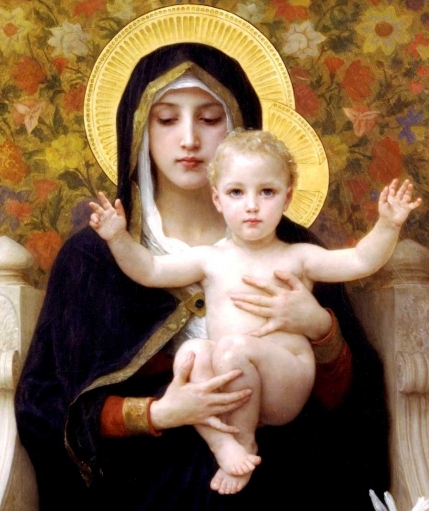(In the calendar of the usus antiquior, today, the Friday before Holy Week, is the memorial of Our Lady of Sorrows. In the revisions of the novus ordo, it is on September 15th, the day after the feast of the Triumph of the Cross, on which day it is also celebrated in the older rite, but under a different aspect. Both have their place, I suppose – here is what we posted for the memorial back in the fall).
A blessed memorial of Our Lady of Sorrows to all, a feast begun in the 1233 – in the youth of that greatest of centuries, when Thomas Aquinas was but a young lad of eight, given as an Oblate to the Benedictines of Montecassino. It was the newly-founded Servite Order in Florence, officially the Ordo Servorum Beatae Mariae Virginis, the Order of the Servants of the Blessed Virgin Mary, who were the driving force behind this devotion to the sorrows of our Blessed Mother. Seven young successful men left everything they had in the world, banded together in community to follow a life of prayer, charity and devotion to the Virgin Mary, and they now comprise friars (priests and brothers), sisters, contemplative nuns, and lay associates, found throughout the world. Their own particular Servite rosary is like the ‘regular’ (that is, Dominican) Rosary, but is said by praying one Our Father and seven Hail Mary’s on each of the Seven Sorrows, or ‘Dolors’, of Our Lady:
The Prophecy of Simeon. (Luke 2:34–35)
The escape and Flight into Egypt, Matthew, 2:13)
The Loss of the Child Jesus in the Temple of Jerusalem. (Luke 2:43–45)
The Meeting of Mary and Jesus on the Via Dolorosa.
The Crucifixion of Jesus on Mount Calvary. (John 19:25)
The Piercing of the Side of Jesus, and His Descent from the Cross. (Matthew 27:57–59)
The Burial of Jesus by Joseph of Arimathea. (John 19:40–42)
And our sorrowful world could use the intercession of Our Lady right now, in the midst of our collective civilizational self-loathing and destruction. We must summon the courage to confront the ‘sorrows’ of this world, the parrhesia of the Apostles, speak out, in ways that are concrete and may affect our own ‘person’.
To offer some hope and inspiration in the endeavour, perhaps a listen to the transcendent beauty of Pergolesi’s Stabat Mater.
Mater Dolorosa, ora pro nobis!

